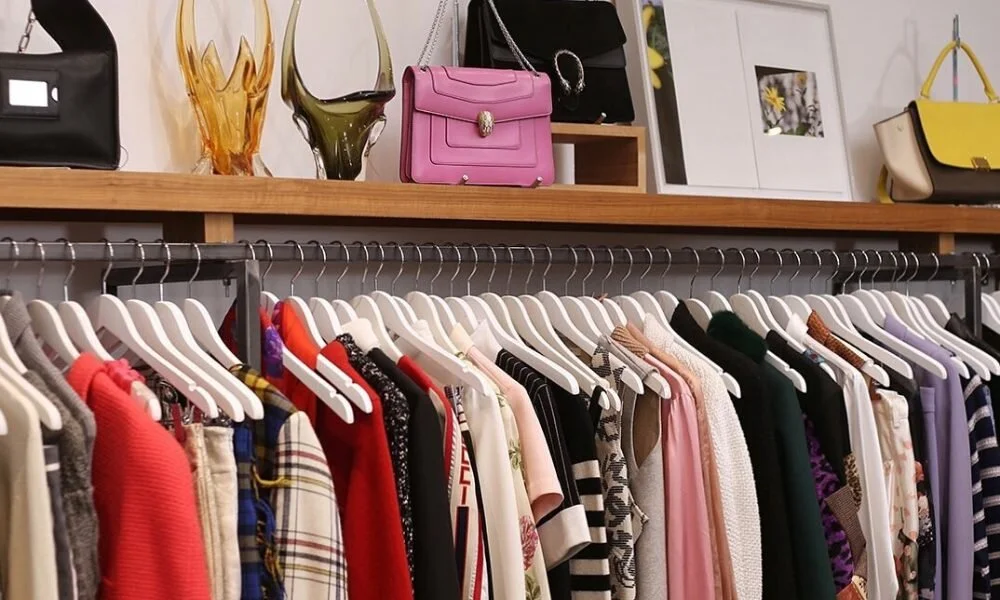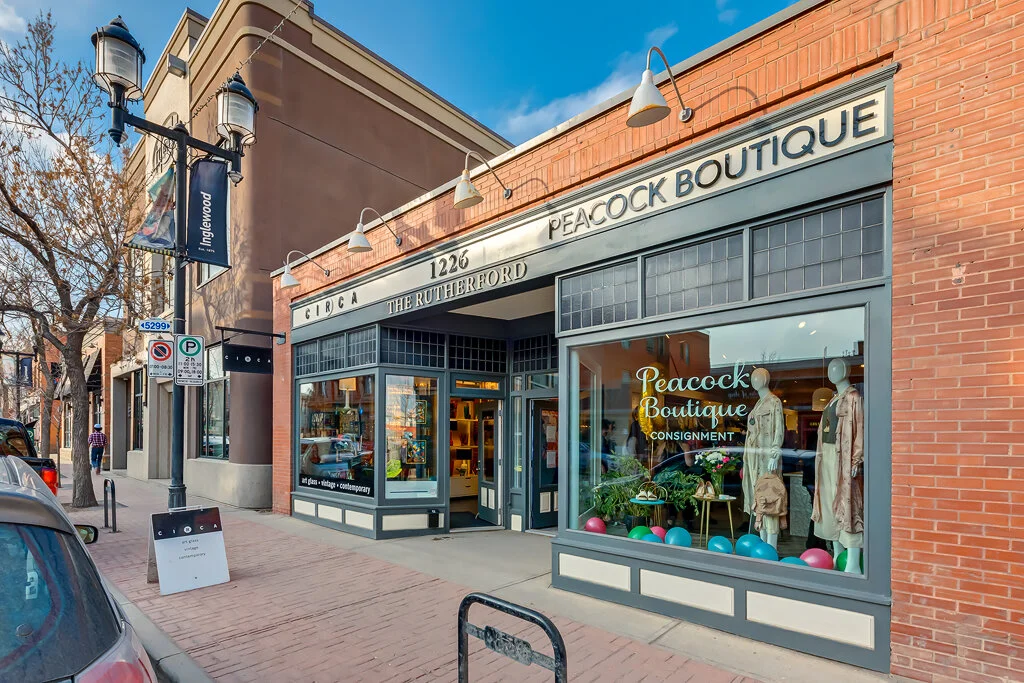Keeping It Real w/ Luxe Du Jour: Top 3 Risks of Buying Counterfeit Handbags

Top 3 Risks of Buying Counterfeit Handbags
Cover Image from Luxe Du Jour
We’ve all been there. You see influencers and fashion bloggers with the newest designer purse in hand and you think “Oh that’s so cute!” only to look at the price tag, and think “Oh that’s sooo not cute.” But you still want the bag! For some, buying or thrifting a cheaper bag with a similar look, compromising on certain elements will do the job. However, there are MANY others that will look at buying counterfeit.
Whether at Pacific Mall in Toronto or through a shady shop on AliExpress, counterfeit items have never been more accessible. According to a recent report by the Organization for Economic Cooperation and Development (OECD), the trade of counterfeit goods has risen to account for 3.3% of global trade. While buying counterfeit goods may seem harmless on the outside, it is a shady industry with ties to organized crime, unethical and unsustainable practices, and can potentially put you and your family’s health at risk.
To learn more about these risks we talked to the CEO of Canada’s leading luxury handbag consignment Luxe Du Jour, Tammy Phan, about the dangers of buying counterfeit and how companies like hers, are combatting this growing issue.
WHAT IS LUXE DU JOUR?
Tammy began collecting designer bags at the age of 14. By 19, she started selling these bags via her Instagram account Luxe Du Jour. Flash forward to 2021 where Calgary-based Luxe Du Jour is “Canada’s Leading Pre-loved Luxury Boutique,” where you can buy, sell, rent, restore, or accessorize a luxury bag. Luxe Du Jour credits their success to a couple of things. While other consignment shops may take up to 60% profit on sales, Luxe Du Jour only takes a mere 10-19% putting as much as 80% of the value of the handbag back into your pocket. On top of that, they are highly skilled in studying counterfeits and work to educate their customers on how to avoid buying fakes.
WHAT EVEN IS A COUNTERFEIT?
“A counterfeit is a knock-off item, trying to impersonate an item from an established brand by using their branding, logos, designs, and trying to sell it for a profit,” Tammy explains.
Luxe Du Jour receives almost 1000 counterfeit bags yearly, but she mentions that the most copied brands are Chanel, Hermes, and of course, Louis Vuitton. However, the big question is, why are people still buying counterfeits and feeding into this growing industry? She believes that the reason for this ultimately comes down to two things: that most people do not know they own a counterfeit, and that many are not educated enough on the topic. As a result, Tammy and Luxe Du Jour want to help educate the public on the consequences of buying counterfeit.
Image from Luxe Du Jour
Here are 3 risks to consider before buying a counterfeit designer handbag:
TOP 3 RISKS OF BUYING COUNTERFEIT
1. You can face fines, criminal charges, or even jail time
Did you know that knowingly reselling a counterfeit can come with a hefty fine or even jail time? Like many drugs, selling counterfeit goods is illegal. It cannot be emphasized enough...DO NOT SELL OR RESELL COUNTERFEITS! If you have bought a counterfeit bag knowingly, you can gift it to a friend or family member after letting them know that it is fake.
On the other hand, if you’ve purchased a counterfeit bag unknowingly, Tammy recommends taking it or sending it back to where you bought it from. Before you do, however, there are some risks to consider. If the bag was previously bought off an online platform such as eBay, AliExpress, or Facebook Marketplace, don’t be surprised if you can no longer find the seller you bought the fake from. These sellers can easily disappear off these sites before they refund you. And no one likes being ghosted!
Image from Luxe Du Jour
2. Counterfeit bags are often connected to organized crime
Have you ever wondered where your money goes when you buy a counterfeit? Maybe you thought they’re using it to pay for the most luxury materials? Or maybe they’re giving it to charity? NOT! There is speculation that profits of counterfeit items help to fund organized crime.
Tammy tells us that this money can go to fund anything from drug and terrorist organizations to child pornography and human trafficking industries. These organizations are already doing illegal acts by selling counterfeits, so activity like this isn’t out of the question. One thing is for sure, this money is most certainly not going towards bettering the working conditions of their employees.
“I once read an article where they found children chained up to sewing machines, forced to work and make these counterfeits,” Tammy tells us.
These sellers take advantage of women and children in developing nations and will go to the extent of kidnapping them for cheap labour. So remember this: Counterfeit sellers are hungry for profit and they do not care about who they exploit in the process.
3. It’s bad for the environment and could be made with toxic materials.
Image from Luxe Du Jour
Tammy tells us that oftentimes when counterfeit bags are disposed of, they are mistaken for real, leather items, and end up in landfills. It is here where they get burned and can release potentially cancer-causing chemicals that affect the natural environment.
Now when I first heard that counterfeit bags could be harmful to the health of the environment, it made sense to me. But when I learned that it also poses a risk to our physical health, I was shocked. I mean obviously counterfeit skincare could give you burns, and counterfeit technology can explode, but handbags? Though after speaking with Tammy, I was educated on the seriousness of health risks that come with counterfeit handbags. She emphasizes that these handbags are made from cheap, plastic materials that can be harmful and toxic. These sellers sell for cheap and therefore make for cheap. Ingesting and even touching these toxic materials can pose major health risks for you and those around you.
Not only does it pose risk to the consumer, but also the workers. As mentioned earlier, child labourers are many times used. They work for hours a day in proximity of these toxic materials, are abused, hardly fed, and work in unsanitary environments.
In an economy with a growing trend of sustainability, Tammy thinks that as people become more educated about counterfeits and their effects on the environment, people will be less willing to buy fakes. There will always remain a counterfeit industry, but it is up to us to un-normalize it.
“We will never be able to fully eliminate [counterfeits] as the black market will remain a corrupt and shady place,” said Tammy.
HOW TO IDENTIFY A COCO CHANEL FROM A COCO CHA-NOT
After talking with Tammy, it is evident that she is an expert in identifying counterfeit handbags. She tells us that to truly know if a bag is fake, you really have to be an expert, constantly studying these bags as the black market adapts and develops. For this reason, Luxe Du Jour only carries a handful of brands so they can fully commit to identifying fakes. Counterfeits are becoming harder and harder to spot, and there really are some things only an expert would know. Did you know that the thread count of an authentic Chanel bag has increased from 11 in the past few years? I surely didn’t! But fear not, because even if you don’t know the ins and outs, Tammy shares some things you can look out for:
1. Smell - Does your bag smell like chemicals?
2. Feel - Does it feel like luxury … or plastic?
3. Date Code - When and where was this bag made?
4. Composition Code - What category is this bag classified under?
Image from Luxe Du Jour
HOW LUXE DU JOUR IS DOING THE MOST
Tammy makes sure that authenticity is majorly emphasized at Luxe Du Jour. They rather decline a bag that they suspect is fake and take the loss for it, than mistakenly sell a counterfeit bag. To further combat this issue Luxe Du Jour offers a lifetime warranty of authenticity.
“If you realize 10 years later that a bag you bought from us is a fake, you can send it back to us,” said Tammy.
They also issue a hefty fine of $450 CAD for anyone who sells them a fake bag and wants it back. They want to do their best to get as many counterfeits off the market as possible.
You might be thinking, what do they do with the counterfeit handbags they receive? It was a pleasant surprise to learn that they use these fakes for educational purposes. Tammy has her authentication staff constantly educated and studying real and fake bags to identify the key differences in them. Most recently, they have even invested in an AI scanner called ‘Entrupy’ that can distinguish an authentic vs. a counterfeit item by microscopically analyzing details invisible to the human eye. So it is clearly evident how invested Luxe Du Jour is in the authenticity of their products and the satisfaction of their customers!
Image from Luxe Du Jour
STOP TRYING TO MAKE COUNTERFEIT HAPPEN. IT’S NOT GOING TO HAPPEN.
Like mentioned earlier, there will always be a counterfeit industry. But Tammy wants to make sure it doesn’t become normalized. When people don’t buy, the industry can’t grow. So unless you want to go bankrupt, go to jail, encourage child labour, or destroy all the harmless plants and animals, here are some things Tammy advises shoppers to think about before buying a counterfeit.
Image from Luxe Du Jour
Invest in quality. Like fast fashion, your Forever 21 and Fashion Nova’s, counterfeit feeds into the issue of quantity over quality. Ultimately, quality items are going to last longer, save you money, help the environment, and are more ethical overall.
Why spend your hard-earned money on a fake? If you want to buy an expensive bag, go to a reputable company or agency with a lifetime guarantee of authenticity, she tells us.
“Have integrity and morals.” At whose expense are you buying this bag? Established companies work so hard to get where they are. You are ripping off their art and diminishing all of their hard work. Also, think of all the women and children labourers who are kidnapped and are being exploited because they do not know better.
“Support authentic businesses, become educated, and help reduce the spread and growth of the counterfeit industry.” And we’ll all be better for it.
HOW TO FIND LUXE DU JOUR
For additional resources and tips on how to identify if your bag is a counterfeit, you can check out Luxe Du Jour’s website and socials where they often post comparisons between authentic and counterfeit handbags. You can also sign up for their newsletter where they send out an in-depth comparison every month.
Website: https://luxedujour.ca
Instagram: https://www.instagram.com/luxedujour/
Facebook: https://www.facebook.com/LUXEDUJOUR
YouTube: https://www.youtube.com/channel/UCxbk9MfdDpnEBzIdr4vBtTA
Pinterest: https://www.pinterest.ca/shopluxedujour/
Shannon Hugh is from Toronto, ON and is currently studying at the Fashion Institute of Technology. She enjoys learning about different cultures, sustainability, multimedia and all things fashion. Her goal is to always experiment and share her experiences with others to make the abnormal…normal.










